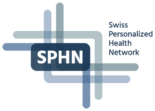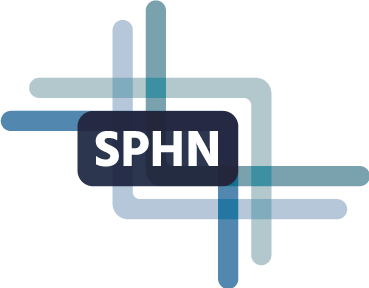Swiss Ophtalmic Imaging Network (SOIN)
Main PI: Prof. Thomas Wolfensberger (Hôpital Ophtalmique Jules Gonin (HOJG-Unil))
Project consortium: Prof. Gabriele Thumann (UniGE), Prof. Serge Bignens (Bern University of Applied Science), Dr. Dominik Steiger (MIDATA Cooperative), Prof. Peter Vollenweider (CHUV), Prof. Olivier Michielin (HUG), Prof. Renaud du Pasquier (CHUV), Prof. Michael Thiel (LUKS).
Project coordination:Dr. Ciara Bergin, Chief Data Officer and Deputy Research Director at HOJG-Unil; Dr. Mattia Tomasoni, Head of the platform for Ocular Imaging Research at HOJG-Unil; Marine Palaz, coordinator of General Consent at HOJG-Unil.
Main achievements
- Creation of a collaborative, clinical research environment, the "Medical Imaging Data Lab", which facilitates privacy-preserving, data-driven research in the field of ocular diseases. The Medical Imaging Data Lab is a virtual laboratory where medical doctors and data scientists cooperate on the creation of novel AI models.
- Establishment of a General Consent procedure at the Jules-Gonin Eye Hospital, for the retrospective reuse of patient data, for research purposes. As of December 2023, 50'000 patients have been contacted, of which 28'000 have responded (with an 85% positive response rate).
- Creation of several patients datasets, including longitudinal imaging data for the following diseases: Glaucoma, Diabetes, Central Serous Chorioretinopathy, and Uveitis.
- Establishment of a collaboration between partner eye hospitals in Switzerland, namely in the cities of Lausanne (HOJG), Lucerne (LUKS), and Geneva (HUG). Thanks to these collaborations, (anonymized) patient data can flow into the Medical Imaging Data Lab and serve researchers around Switzerland.
- Commencement of a project to connect all the medical imaging devices within the Jules-Gonin Eye Hospital (i.e. the Gather project), with the objective to enable automatic extraction of real world patient data.
- Advancements in personalized eye care, specifically, utilization of Machine Learning (ML) on medical imaging for personalized care in chronic ocular diseases leveraging real world, clinical data from the sites mentioned above.
- Advancements in eye research, specifically: development of algorithms for the automatic extraction of hundreds of ocular biomarkers, and application of these tools to the analysis of hundreds of thousands of retinal images. These efforts enabled the development of predictive models for ocular diseases and identification of genetic mechanisms.
Reusable infrastructures and datasets
The Cohort Builder pipeline
A software pipeline for the creation of patient cohorts with predefined baseline characteristics for retrospective studies from raw imaging data in clinical settings.
Available resources
The pipeline is currently under development. A working prototype is deployed at the Jules-Gonin Eye Hospital and inside the Medical Imaging Data Lab. Publication is ongoing and the code can be shared with potential future research collaborators.
Dataset: Grading of Uveitis Inflammation
Dataset collecting grading on inflammation in uveitis patients (N=534; FA); using a custom-made data extraction and analysis pipeline (i.e., Cohort Builder), we collected 3312 eyes from 534 uveitis patients. Thanks to our Cohort Builder software, Dr. Hoogewoud was able to annotate (the first visit) of each patient. A sample of 100 patients has also been annotated, remotely, on the Medical Imaging Data Lab, by a collaborator at LUKS. In collaboration with Dr. Hoogewoud, Prof. Guex-Crosier, Dr. Anjos (Idiap Research Institute) and Dr. Amstutz (LUKS)
Available resources
Publication is ongoing and the data might be shared with future research collaborators upon agreement with the study PIs. Please contact Mattia Tomasoni.
Dataset: Co-morbidity of Glaucoma and Diabetes
Dataset comprinsing comorbidity of Glaucoma (POAG) and Diabetes (T2D) dataset (N=77; OCT); thanks to our Cohort Builder software and an additional manual analysis of the paper records, we created a data set comprising two groups: patients with POAG (and no other comorbidity) and patients with both POAG and T2 diabetes (but no other comorbidity). Extension of the dataset to HUG data is currently ongoing, in collaboration with Dr. de Clerk and Prof. Thumann.
Available resources
Publication is ongoing and the data might be shared with future research collaborators upon agreement with the study PIs. Please contact Mattia Tomasoni.
Dataset: Central Serous Chorioretinopathy Recurrence
Dataset of recurrent vs non-recurrent Central Serous Chorioretinopathy (CSCR) patients (N=255; OCT, FAF). We created a dataset comprising 255 patients and 344 eyes, thanks to our Cohort Builder software. Prof. Eandi (HOJG) annotated the data. Analysis: statistics and machine learning to analyse the factors influencing recurrent vs non-recurrent CSCR dataset, using the data set mentioned above. Analysis: deep learning to predict recurrent vs non-recurrent CSCR dataset, using the data set mentioned above.
Available resources
Publication is ongoing and the data might be shared with future research collaborators upon agreement with the study PIs. Please contact Mattia Tomasoni.
Dataset: Retinal Layer Thicknesses in Diabetic Patients
Measurements of retinal layer thicknesses in sevaral subgroups of diabetic patient (OCT); Non-Proliferative Diabetic Retinopathy (NPDR) type I (N=127), NPDR type II (N=49), NPDR type III (N=19), PDR (N=176), controls (N=75,751). Analysis: choroidal thickness changes in diabetic patient subtypes.
Available resources
Publication is ongoing and the data might be shared with future research collaborators upon agreement with the study PIs. Please contact Mattia Tomasoni.
Dataset: Geographic Atrophy Identification
Annotation of Geographic Atrophy in wet Age-Related Macular Degeneration (N=100 OCT, N=50 cases + N=50 controls): in collaboration with Dr Mantel (HOJG) and RetinAI AG (Bern). Analysis: deep learning segmentation of Geographic Atrophy.
Available resources
Publication is ongoing and the data might be shared with future research collaborators upon agreement with the study PIs. Please contact Mattia Tomasoni.
Dataset: Photoreceptor Imaging using Adaptive Optics
Dataset collected by using Adaptive Optics (i.e., AOSLO) technology, capturing cellular resolution images of cone photoreceptors (N=43; AOSLO, OCT). Images collected by Dr. Jacot-Guillarmod. Analysis: automatic estimation of cone photoreceptor density and correlation with retinal layer thickensses.
Available resources
Publication is ongoing and the data might be shared with future research collaborators upon agreement with the study PIs. Please contact Mattia Tomasoni.
OphtalmoLaus cohort
Substudy of the CoLaus cohort (N=2209) comprising the following imaging modalities: OCT, OCT Angiography, Color Fundus Images and and iris photographs. Analysis: leveraging the Cohort Builder pipeline in the Medical Imaging Data Lab, we extracted 46 independent eye parameters (including layer thicknesses and several disease biomarkers calculated bu the software Discovery by RetinAI AG).
Available resources
Publication is ongoing and the data might be shared with future research collaborators upon agreement with the study PIs. Please contact Mattia Tomasoni.
Follow up projects – continuation – next steps
The Medical Imaging Data Lab hosts data science researchers and doctors from the Jules-Gonin Eye Hospital and from its partner institutions. A new hospital platform, the "Plateforme de Recherche en Imagerie Oculaire" has been set up within the Jules-Gonin in 2022 to exploit the infrastructure. The Medical Imaging Data Lab currectly supports the research connected to a 2022 SNF SINERGIA grant, led by Prof. Bergmann at UNIL. Jules-Gonin, in partnership with the Idiap Research Institute (Martigny) has applied for further SNF funding in 2023. A grant by EURETINA is currently under review to extend the infrastructure to other European countries (including the UK, France, and the Netherlands).
Links and references
https://www.ophtalmique.ch/hopital/participer-a-la-recherche/soin/
https://www.ophtalmique.ch/centre-de-recherche/plateformes/rio
References on Pubmed
- Bergin C, Mantel I, Schlingemann RO, Tomasoni M, Wolfensberger TJ. SOIN – MI Data Lab: Personalized Ophthalmology Through Collaborative Data Collection and Dynamic Patient Consent. Studies in Health Technology and Informatics. doi: 10.3233/SHTI220457
- Prod'homme M, Grasset D, Akiki A, Helfer L, Dietrich G, Müller JP, Tomasoni M, Sellami M, Boscherini D. Significant Reduction of Radiation Exposure Using Specific Settings of the O-Arm for Percutaneous Cementoplasty in Accordance With the ALARA Principle. Int J Spine Surg. 2023 Aug;17(4):534-541. doi: 10.14444/8477. Epub 2023 May 30. PMID: 37253626; PMCID: PMC10478703.
- Amiot V et al. Fully Automatic Grading of Retinal Vasculitis on Fluorescein Angiography Time-lapse from Real-world Data in Clinical Settings. 2023 IEEE 36th International Symposium on Computer-Based Medical Systems (CBMS), L'Aquila, Italy, 2023, pp. 689-693, doi: 10.1109/CBMS58004.2023.00301.
Disclaimer: The contents on this website are intended as a general source of information and have been provided by the project PIs. The SPHN Management Office is not responsible for its accuracy, validity, or completeness.

